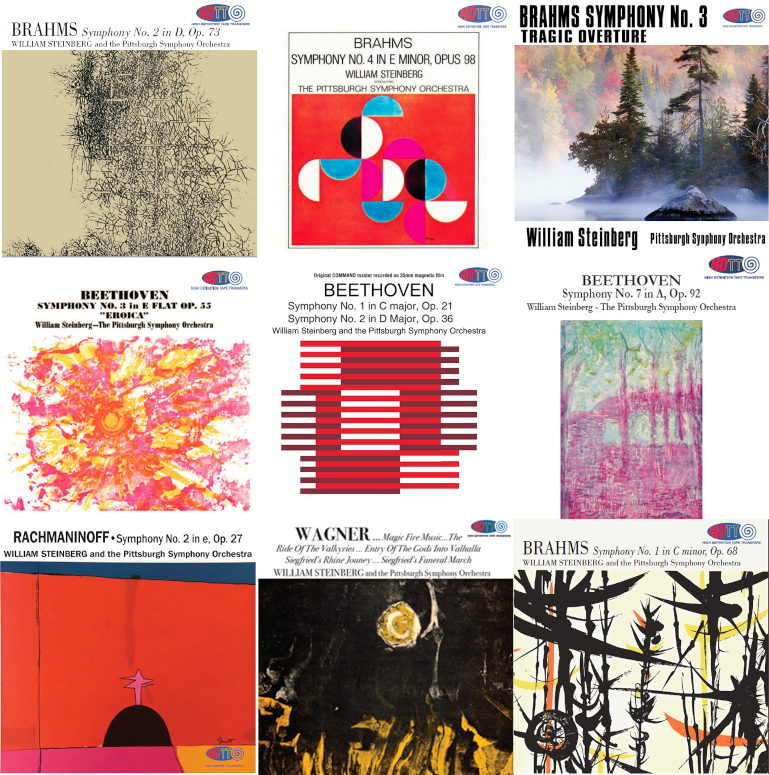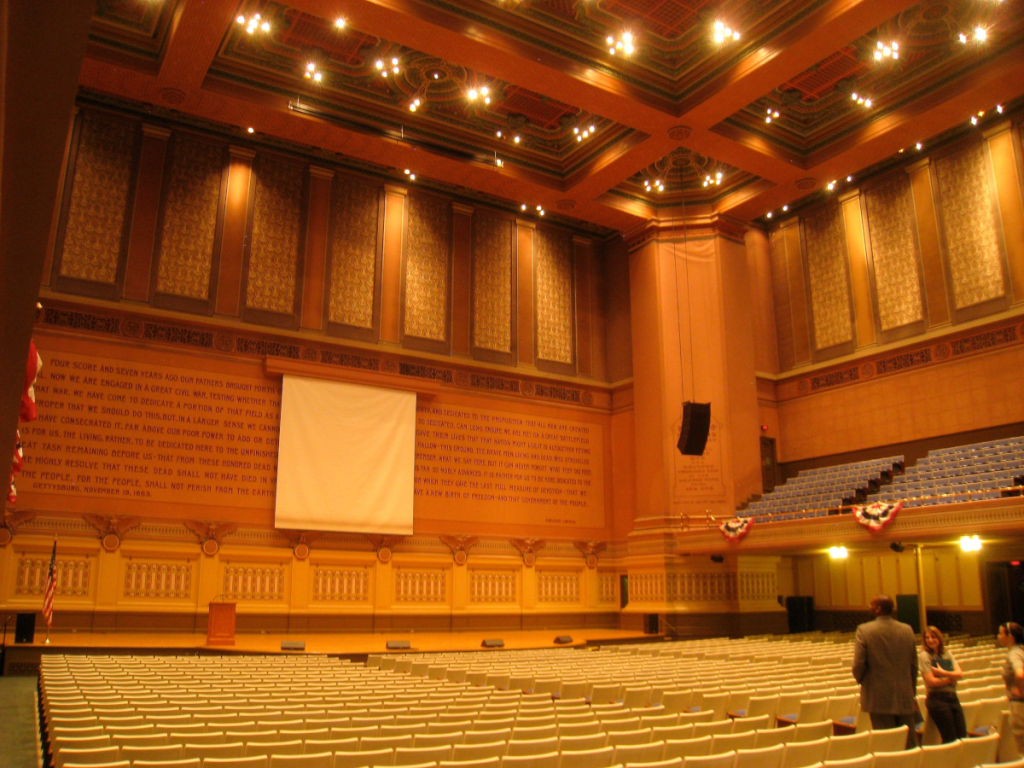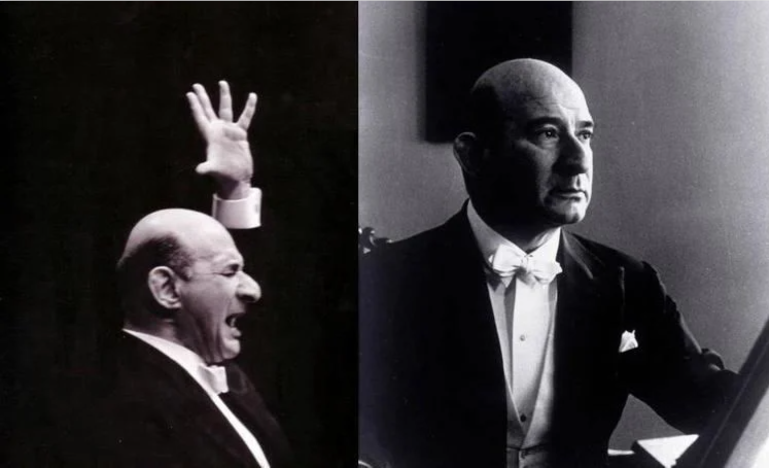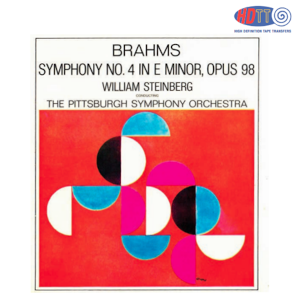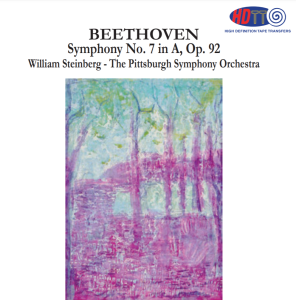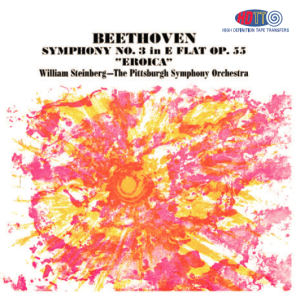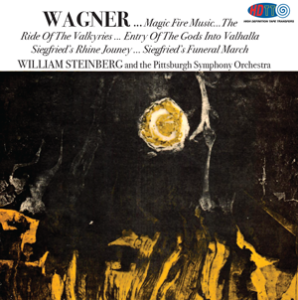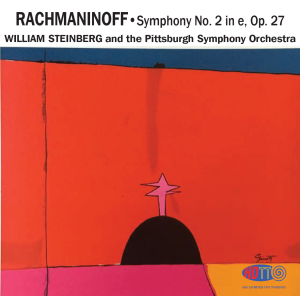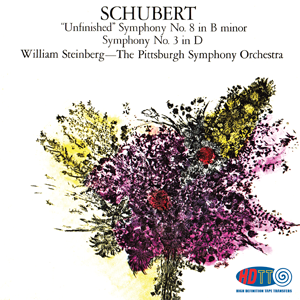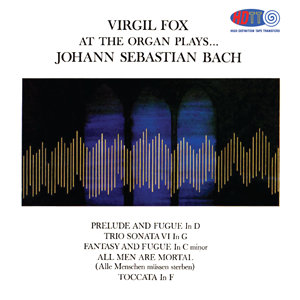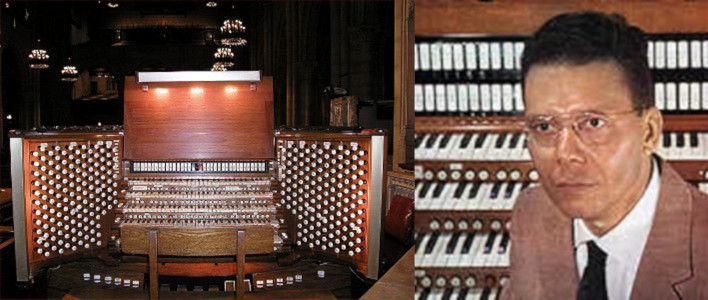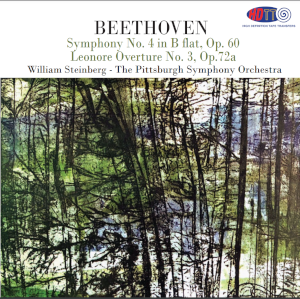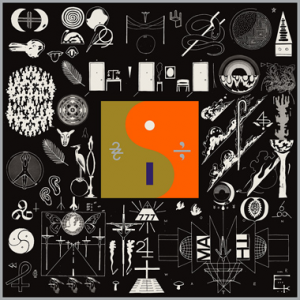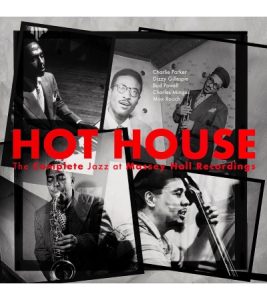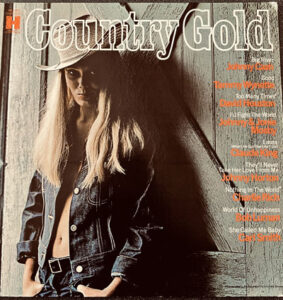Recording engineer C. Robert (Bob) Fine (1922 - 1982) is best known for his Mercury Living Presence recordings with his wife Wilma Cozart Fine, and he will always be associated with those Mercury recordings. But, while Wilma Cozart Fine was an employee of Mercury (VP of classical music at Mercury Records until she retired in 1964), Bob Fine never was. He was an independent recording engineer, the founder of Fine Recording, Inc., in New York.
In addition to the many excellent recordings he engineered, Fine was an inventor and innovator in recorded music for film, and built an extensive company, Fine Recording, Inc., with studios for orchestral film score recording, jazz recording, mastering and disc lacquer cutting. For a well written and researched history of Fine Recording, Inc., I refer you to an article at Preservation Sound (HERE) which was written with input from Tom Fine, son of Bob Fine and Wilma Cozart Fine, along with a number of vintage photographs from the recording studios. If you are at all interested in the history of audio recording, this is good reading.
What I'd like to discuss in this article are some of the many Command Classics releases from the early 1960s that were recorded by Bob Fine. In the years when I collected LPs, there was one major problem: the quality of the vinyl was highly variable, making for a very uncertain listening experience. The originals were quality pressings with gatefold jackets. The reissues in the early-mid 70s were pressed on poor vinyl with non-gatefold covers, and the ones I purchased from this period had very disappointing surfaces. Nonetheless, the underlying recordings sounded as if they'd be good. And the performances were frequently excellent.
So, what a pleasure it's been to discover these recordings released in high resolution digital transfers from analog tapes by HDTT.
Of particular note among the Bob Fine recordings for Command are the performances of William Steinberg and the Pittsburgh Symphony Orchestra. While these HDTT reissues are transfers from the Command 4-track commercial open reel tapes (as far as I can tell), the sound quality in the DXD transfers is outstanding and the performances are terrific. If you like the direct impactful sound of the Mercury recordings, you should like these.
Soldiers and Sailors Memorial Hall auditorium, Pittsburgh (CC)
Bob Fine and producer Enoch Light searched the Pittsburgh area for a suitable recording venue and settled on Pittsburgh's Soldiers and Sailors Memorial Hall auditorium. This recording venue is somewhat unusual in that the stage location is positioned within the hall itself. The entire auditorium is then a full resonance chamber for the orchestra. To accommodate this, Fine elected to use a seven-microphone pickup in these recordings. The sonic results are consistently transparent, highly detailed, and with great immediacy and impact.
Steinberg said of these sessions, "At first I opposed this location, because I can't hear the orchestra there, the ceiling is so high. I suppose it must be so high to make room for the Lincoln inscription. But the engineers said, 'The microphones hear very well, and we will use a lot of them.' Who am I to argue with the engineers? So we recorded in Memorial Hall. I am the only conductor in history who memorized the Gettysburg Address (inscribed on the wall behind the orchestra) while rehearsing Brahms' Second Symphony." HERE
William Steinberg, courtesy Alchetron HERE
William Steinberg (1899 - 1978) was born in Germany and served as music director of the Cologne Opera and later the Frankfurt Opera. He was relieved of his post by the Nazis in 1933 for being Jewish and he subsequently left Germany in 1936 for Palestine. There, with co-founder Bronisław Huberman, he trained the Palestine Symphony Orchestra, which would later be known as the Israel Philharmonic Orchestra. In 1938, Steinberg emigrated to the United States working with various orchestras until he began his long tenure with the Pittsburgh Symphony Orchestra from 1952 to 1976. Steinberg guest conducted at most of the major U.S. orchestras as well as a long list of European orchestras. But he remained committed to Pittsburgh saying, "We are too closely wed, the Pittsburgh Symphony and I, to contemplate any divorce."
In my opinion, the fact that Steinberg's name is less storied than that of Szell or Munch says more about capitalism than about music. Steinberg's performances are straightforward, direct, with dynamic drive, but without personalized/egotistical stylization. Yet he brings an expressive musical style, leading familiar works with integrity and authority. To my ear, his performances sound fresh and vital. The fact that the major labels had sewn up contracts with the other top ranked orchestras in Boston, Chicago, Cleveland, Philadelphia and New York simply meant that Pittsburgh had less opportunity for broad distribution. It says nothing about the excellence of the orchestra and William Steinberg.
Brahms Symphony No. 4, William Steinberg, Pittsburgh Symphony Orchestra. HDTT (DXD) HERE
Steinberg recorded the four Brahms symphonies with Command Records and the Fine recording team in 1961 and 1962. It is a superb cycle, as good as any to be found, and HDTT has now released all four. His interpretations are direct, unaffected, with powerful forward movement in the Allegro movements that are still never rushed. The Adagios have profundity and aren't too slow.
The Fourth is a straightforward account with a bracing forward pulse and vibrant energy. And while Steinberg’s approach doesn’t really project the music’s grim power at the conclusion of the first movement and finale, I find the performance most enjoyable for its freshness.
Unfortunately, only the Fourth has been transferred DXD, the others are lower PCM bitrate transfers from a few years ago. Still, the transfers at 24/192 sound very good, just not quite to the same level of clarity as the 24/352 release. All four are good examples of the Bob Fine's exceptional engineering.
Brahms Symphonies 1-3, William Steinberg, Pittsburgh Symphony Orchestra. HDTT (24-96 and 24-192) HERE
The Beethoven Symphonies are the other cycle recorded by William Steinberg at Pittsburgh and recording by Bob Fine for Command.
Steinberg was Toscanini's assistant at the NBC Symphony when eh first arrived in the United States, so it hardly surprises that his Beethoven is fleet, energized, clear-textured, and exciting. He highly valued letting the music speak for itself—no breast-beating or philosophizing here, just pure Beethoven.
Beethoven Symphony No. 7, William Steinberg, Pittsburgh Symphony Orchestra. HDTT (DXD) HERE
As one purchaser at the HDTT website says about this recording, "It's the famous 3rd movement which makes this recording so memorable. Ten seconds in, you'll think 'Wow! I didn't know Pittsburgh could play like this.' They could and they did. The sensitivity and musicality is what makes this greater than Ormandy's famous rendering. The last movement is on fire."
And I totally agree with this assessment. The clean attack of the Pittsburgh strings is very well projected, particularly in the 'Finale’, which keep the evenness and energy of the musical line moving with precision without losing inertia. Overall, Steinberg and the Pittsburgh deliver an outstanding, invigorating, highly musical performance of this symphony. The DXD release I'm listening to sounds terrific here.
As C.M.Briggs said, Steinberg makes "a master sculptor's Beethoven....with every detail perfectly wrought and in perfect proportion to the overall design."
Beethoven Symphony No. 3, William Steinberg, Pittsburgh Symphony Orchestra. HDTT (DXD) HERE
And yet another terrific recording and performance in this Beethoven Third Symphony. The funeral march marches with extreme clarity as well as emotional depth—try the solo clarinet or the unexcelled horns in the third movement trio. The finale is wonderful: very quick, urgent, and extremely dramatic. It simply dances.
Wagner Selections From Der Ring Des Nibelungen, William Steinberg, Pittsburgh Symphony Orchestra. HDTT (DXD) HERE
A beautifully well engineered recording—clear, transparent, detailed. With wonderful performances—direct, straight-forward, with fine clarity of line. As enjoyable an album of these oft performed works as any in my collection, and with better sound than most.
A rare (for me) point of comparison: Steinberg's performances here remind me a lot of Leinsdorf's performances with the Los Angeles Philharmonic Orchestra recorded direct-to-disc by Sheffield Labs, a recording I've been very fond of over the many years; it held a place of high regard in my vinyl collection. The performances share a similar directness, with clear, transparent sound. But, as fond as I've been of the Sheffield Labs release, the engineering Bob Fine applies in capturing the sound of the Pittsburgh Orchestra is superior and sonically more satisfying.
Rachmaninoff Symphony No. 2, William Steinberg, Pittsburgh Symphony Orchestra. HDTT (DXD, Redux Series) HERE
Along with Andre Previn, this is one of my favorite recordings of Rachmaninoff's Second. Powerful, musical, with real sentiment, but not sentimental and definitely no schmaltz. As Gary Lemco writes in his review of this recording, "Steinberg winds the orchestra up into a terrific color machine, string pizzicati, triangle, and trumpet all competing for stellar space....The might and the tonal finesse of the Pittsburgh strings made it a sure rival to the Philadelphia sound under Ormandy; and Steinberg’s is always the more searching intellect." HERE
Bob Fine's recording captures tremendous detail, with great clarity, and precise soundstage placement of instruments. Just a truly remarkable.
Schubert Symphony No. 3 & No. 8 "Unfinished," William Steinberg, Pittsburgh Symphony Orchestra. HDTT (DXD) HERE
As much as Schubert admired Beethoven, this symphony reflects more the influence of Haydn and Mozart, along with a nod to Rossini. The symphony opens with a stately introduction leading into an effervescent brio which, along with a good-humored allegretto and a buoyant minuet in the second and third movements, seems to take Haydn as its model. The performance by Steinberg and the Pittsburgh Symphony Orchestra is suitably lithe, articulate and dance like. Steinberg's take on the two movements of the "Unfinished" Symphony No. 8, are characteristically direct and without editorialization. Together with excellent engineering from Bob Fine and his team, this is a lovely album which provides much enjoyment here.
Virgil Fox Plays Johann Sebastian Bach. HDTT (DXD) HERE
Virgil Fox is always a mixed bag for me, but hearing him play the huge organ of Riverside Church, where he was organist at the time, is an unalloyed pleasure. He draws on the entire range of sound of which this organ is capable—which is most substantial. The opening work, the oft heard Prelude and Fugue in D Major, dances from one rank of pipes to another as Fox calls from one register of pipes to another (1:33 and again at 4:44). Uncommon life breathes in the Trio Sonata, which simply shimmers. The opening deep notes of the Fantasy and Fugue will exercise one's subwoofers to play fully.
All of this is cleanly and clearly captured by Bob Fine's placement of his microphones. It is as fine a capture of the sound of an organ as I have in my collection.
My hope in presenting this article is that it will give you some places to start in your explorations of the excellent recording skills Bob Fine consistently provided beyond the Mercury Living Presence catalog. And, HDTT comes to our service with many of the Mercury Living Presence recordings made by Bob Fine, as well (HERE). So, explore and enjoy.
An Addendum, April 21, 2022:
May I add an addendum? I don't know. But, if our dear editor doesn't like this, I'm sure I'll hear about it. Here's a new addition of another great Bob Fine recording for the Command that HDTT just added to their catalog…
Beethoven Symphony No. 4 and Leonore Overture No. 3, William Steinberg, Pittsburgh Symphony Orchestra. HDTT (DXD) HERE
As I mentioned earlier in this article, Steinberg was an excellent conductor of Beethoven and these performances find him and his Pittsburgh players in top form. His performance of the Leonore Overture No. 3 is white hot. He moves across extremes of very quiet, soft passages to full bloody roar, and the orchestra plays for all they're worth to stay right in step with his vision for this piece. The brass section simply shines. It's quite a wild ride and well worth the journey.
Steinberg's Symphony No. 4 must rank as one of the best performances in the catalog. As one reviewer commented, it "shows how Steinberg was able to hold a phrase in mid air and keep the drama going without losing any momentum." I just love it. The orchestra continues in top form throughout this performance.
Fine delivers another of his excellent recording efforts. The recording is all that one thinks of with the Mercury recordings: up front, very detailed, full frequency extension, tremendous impact. It's a great recording.
To repeat, if you haven't already discovered all of the other Robert Fine recordings in the HDTT catalog, you should go looking for them. Performances and recording quality are all excellent, as are the HDTT transfers. In this case, the HDTT DXD transfer is superb: very low noise floor, transparent, highly resolved. Well done!




